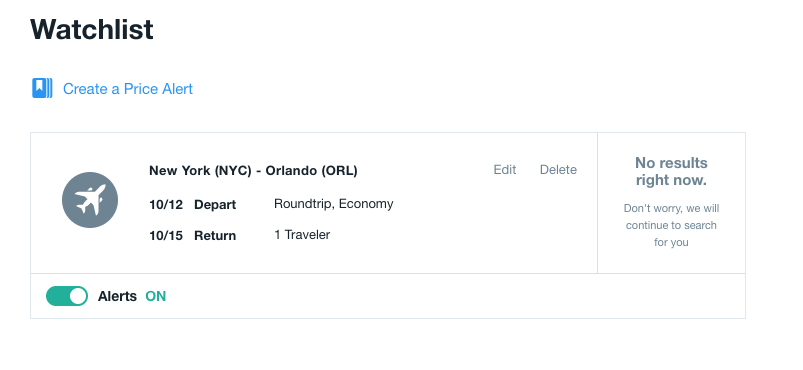Customers for whom a product from your company is too expensive do not buy it, postpone the purchase or, in the worst case, buy from the competition. In either case, the customer is lost, at least temporarily. Price alerts by email are an easy to implement measure to bind such customers to you and perhaps persuade them to buy after all. Price alerts (or watchlists) are often used by larger online shops or portals that aggregate third-party offers (e.g. travel portals). However, they are suitable for all providers who at least occasionally lower their prices.
Your customer is in your online shop or on your portal and explicitly researches for a product. Or he comes across a product he likes while browsing. However, the product is too expensive for him and he breaks off the buying process. If you are lucky, the customer has already placed the product in the shopping cart and you can reactivate him via shopping cart cancellation emails. If you are unlucky, he leaves without you being able to reach him. Maybe he is now researching whether he can get the product cheaper somewhere else or he just forgets it again.
Retrieve customers with price alert mails
How do you get this customer to buy the product after all? Offer the possibility of a price alert or a watchlist. With a price alert the customer will be informed by you if the product has become cheaper. They leave their email address and, in the event of a price change, they automatically receive a mail with the relevant information and the opportunity to buy the product now.
Price alert mails are very easy to implement. As soon as the price of a product changes, your shop management system automatically sends a trigger to your marketing automation technology, which then sends the price alert mail to all “preregistrators”. Once price alert mails are set up, they do not need any further effort and automatically become revenue generators. This, however, does not mean that you should not optimize price alert mails regularly, e.g. by testing.

Combine Price Alert Mails with other measures
To unlock the full potential of price alert mails, you should combine them with other email marketing measures. Here are some ideas:
- Win newsletter opt-ins: Use price alerts to win additional newsletter opt-ins. Simply place a second checkbox for newsletter registration below/next to the option to register for price alerts.
- Reactivate users who already placed products in their shopping carts: Maybe your customer has already placed the product in the shopping cart and you can reactivate it with automated shopping cart cancellation emails. If this does not work, offer him as an alternative to register for a price alert for the product.
- Offer alternatives: Does the product not drop in price or is it still too expensive for the customer after a price reduction? In that case, offer them a cheaper alternative instead. Better he buys a cheaper product from you than not buying at all.
- Adopt the product in newsletter communication: If you also have a customer’s newsletter opt-in, show the customer the desired product from time to time also in the newsletter. This might motivate them to buy the product at the original price.
- Integrate coupons: If the customer does not buy, neither at the original price nor at the discounted price, a discount coupon can be an effective argument.
Avoiding pitfalls
If you want to rely on price alert mails, you should avoid some pitfalls:
- Choose the right pricing strategy: Price alerts must also fit your pricing strategy. If you never lower prices, you do not need price alerts. If you only rarely lower prices, price alerts do not offer the customer any added value. But even if you lower prices very often, you must be careful not to “educate” your customers to wait for price reductions instead of buying at the original prices.
- Be careful with individual prices: Customer-individual prices are a controversial topic, the advantages and disadvantages of which will not be discussed here. If you are using customer-individual prices, it may make sense to deliberately lower prices for “price alert users”. Be careful, however, not to “educate” your customers to be too price-sensitive. Your individual pricing mechanism should also be designed in such a way that your customers cannot see through and manipulate it.
- Don’t raise false expectations: Customers might think that products for which price alerts are available will definitely become cheaper at some point. “If I sign up for the alert, I just have to wait for the price reduction.” Make it clear that there is no guarantee of a price reduction and that registering for a price alert will not affect the price development of a product.
- Do not bait: As I mentioned earlier, you can combine price alerts with other measures. However, these should always only be an addition to the price alert. Never give the customer the impression that the price alerts are just bait to get him on the newsletter distribution list, for example.
- Switch off alerts: It’s obvious but sometimes people forget: If the customer buys the desired product, you must also switch off the price alert. There is hardly anything more unpleasant than when a customer buys a product and is informed about a price reduction a week later.